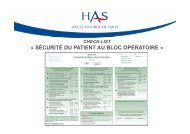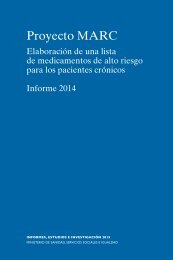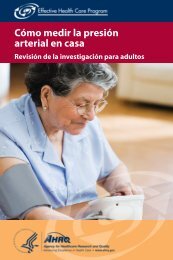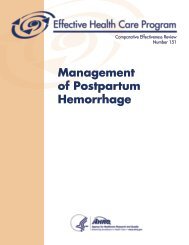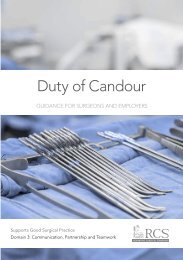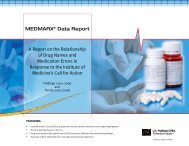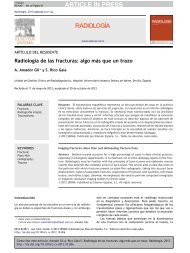for Invasive Procedures (NatSSIPs)
Z3q53
Z3q53
You also want an ePaper? Increase the reach of your titles
YUMPU automatically turns print PDFs into web optimized ePapers that Google loves.
OFFICIAL<br />
3.5.6 Patient involvement<br />
The patient is the most important member of the team<br />
It is recommended that patients and patient groups be involved in the creation,<br />
development, implementation, review, modification and governance of LocSSIPs.<br />
Patients, and/or their parent, guardian, carer or birth partner, should be actively<br />
involved in the individual safety steps in LocSSIPs when feasible. For instance, a<br />
patient with capacity can participate in the handover to the procedure team from the<br />
ward or admission area, in addition to the sign in. If the procedure is per<strong>for</strong>med under<br />
regional or local anaesthesia without sedation, it is also possible <strong>for</strong> the patient to<br />
participate in the time out, sign out and other handovers within the patient pathway.<br />
3.5.7 Audit and review<br />
Not just “what we did” but “how well did we do it?”<br />
At the heart of the <strong>NatSSIPs</strong> and LocSSIPs processes and pathways is continual<br />
audit of compliance with the safety standards and review of patient safety incidents,<br />
“near misses” and suggestions from procedure teams <strong>for</strong> ways of improving patient<br />
safety. Both <strong>NatSSIPs</strong> and LocSSIPs will be part of iterative processes that will allow<br />
review of the current standards, suggestions <strong>for</strong> changes and improvement, careful<br />
implementation of modified standards, and audit of the effects of changes. This<br />
continuous quality improvement cycle conducted on a local basis will be mirrored<br />
nationally, with organisations being able to feed back to the organisations who<br />
created the <strong>NatSSIPs</strong>, with changes being made as appropriate to the standards.<br />
Organisations should not only audit the fact of the per<strong>for</strong>mance of LocSSIPs, but<br />
should also audit the quality of their per<strong>for</strong>mance, e.g. it is not sufficient simply to<br />
record that a Time Out occurred, but that the Time Out included the active<br />
involvement of all staff involved in the procedure. Organisations could develop<br />
scoring systems that allow those involved in invasive procedures to grade the quality<br />
of the per<strong>for</strong>mance of LocSSIPs.<br />
3.6 Structure and content of the <strong>NatSSIPs</strong><br />
The <strong>NatSSIPs</strong> presented in this document are in two groups: organisational (the<br />
standards that underpin the safe delivery of procedural care) and sequential (a<br />
logical sequence of steps that should be per<strong>for</strong>med <strong>for</strong> every procedure session or<br />
operating list, and every patient):<br />
Organisational<br />
1 Governance and audit<br />
2 Documentation of invasive procedures<br />
3 Work<strong>for</strong>ce<br />
4 Scheduling and list management<br />
5 Handovers and in<strong>for</strong>mation transfer<br />
20



